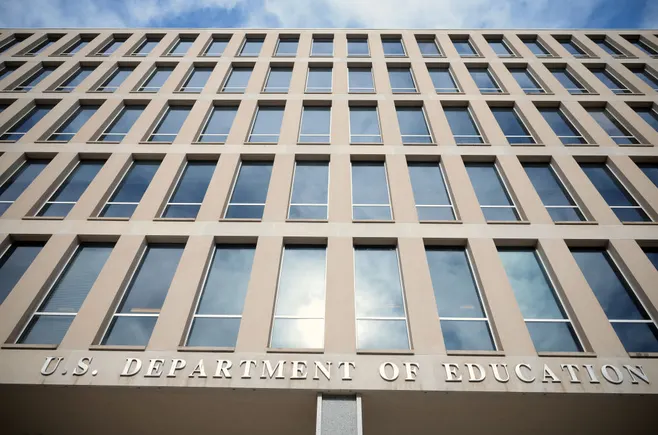Student loan debt could become a headache for employees as well as employers in the coming months with the federal government set to ramp up its collection efforts.
The U.S. Department of Education announced in April that it would resume collections of defaulted loans — those on which borrowers have not made payments for a period of time determined by their loan’s type — beginning May 5. This marks a shift after years of lighter enforcement in the wake of COVID-19, said Dave Amendola, defined contribution strategy intellectual capital and innovation leader at WTW.
Previously, the Biden administration extended a 2020 pause on repayments, collections on defaulted loans and implementation of 0% interest rate through October 2023. It then granted borrowers a 12-month “on-ramp” period during which missed payments would not count towards unpaid loans being considered in default.
But the Education Department’s recent announcement means that those who are in default are on notice of their need to resume monthly payments. The agency said that, beginning this summer, it would send notices via its Office of Federal Student Aid ordering administrative wage garnishments in certain cases. These changes could directly affect some workers over the next several months, according to Amendola.
“It’s still a little early to tell how it’s going to play out, but we’re anticipating, and there is concern, that this could be a really challenging time for those with student loans and debt,” he said.
Wage garnishments, credit score shocks on the table
The changes may be especially jarring for employees who have not resumed repayments on their loans following the end of the on-ramp period, Amendola continued, because those borrowers “wouldn’t have necessarily seen or felt in real terms the ramifications of that” unless they received alerts from credit bureaus, loan servicers or similar entities about nonpayments.
Wage garnishment and other debt collections are now on the table, though, and if employees who are in default have their wages garnished, employers don’t have much leeway to address it, Amendola said.
By the numbers
42.7 million
The number of U.S. borrowers that collectively hold more than $1.6 trillion in student debt.
About 25%
The percentage the federal government’s student debt portfolio is expected to be in default within months of the Education Department’s April 2025 student loan collections announcement.
5 million
The number of borrowers that had not made a monthly payment on their federal student loans in over 360 days as of April 2025.
Separately, an increase in the share of delinquencies that followed the expiration of the Biden administration’s on-ramp period contributed to a two-point decline in the average FICO credit score between April 2024 and February 2025, a FICO analysis found.
At the time of the Education Department’s announcement, an estimated 5 million borrowers were in default, and the agency estimated that this figure could double to 10 million within a few months.
But the prospect of making repayments again is made more difficult by ongoing cost-of-living concerns, particularly so for borrowers who are in default, Amendola said; “I think it is going to be a challenge for normal people.”
Where employers can get involved: Assistance, education and navigation
A large portion of U.S. households struggle with financial health. A January U.S. News & World Report survey of 1,207 Americans found that 42% of respondents did not have an emergency savings fund, and 40% said they couldn’t afford a $1,000 emergency expense with either their cash or savings.
The struggle to manage day-to-day financial needs has consequences on how productive, focused and healthy employees are when they show up to work, Amendola said, and the prospect of budgeting additional dollars to repay student loans can deepen the risk of negative outcomes. But there are several methods of support employers may consider, he added.
One area is payment assistance, whether an employer provides direct reimbursement to employees with existing loans or offers tuition assistance — sometimes at no cost — to employees who seek to go back to school or take courses for upskilling or reskilling purposes. The latter is “something a lot of employers have really been focused on,” Amendola said.
Pandemic-driven relief efforts that temporarily eliminated the need to make loan repayments may have led employees to lose interest in educational assistance benefits, Amendola said, but he added that the next few months could present a “compelling” resurgence in demand for such programs.
Aside from direct financial assistance, employers also can partner with vendors that specialize in navigating debt, as well as public loan forgiveness and repayment programs. Navigation programs are already prominent in other benefits contexts, such as healthcare, but Amendola said education navigation support can be a cost-efficient way of providing assistance to workers.
He also pointed to options made possible by the SECURE 2.0 Act, which included a student loan payment program under which employers may match employee contributions to eligible student loan payments. The program has seen limited adoption in the time period immediately following its implementation, but interest is growing, Amendola said.
Separately, a 2024 IRS private letter ruling clarified that employees may elect to reallocate a portion of their employer’s matching retirement contributions toward benefits such as those that reimburse the employee for student loan repayments. While the IRS wrote the letter in response to a specific employer’s inquiry, Amendola said other employers have since taken interest in such arrangements and designed similar programs.
‘Now is the time’ for HR teams to pay attention
Regardless of which paths employers choose to address employees’ student loan concerns, it is important to begin with an understanding of the federal government’s enforcement efforts, as well as what percentage of employees is challenged by student loan debt, Amendola said. While it can be difficult to engage with workers on the subject of debt, he noted that vendors and external partners may be able to work with employees to provide employers a clearer picture.
The idea isn’t to have a direct understanding of how much debt each individual employee has but rather a general idea of the size of the cohort that is struggling, Amendola added. Employers can inform employees that they know they may be dealing with student loan repayment and that there are resources available to help them navigate any issues.
From there, HR can work with leaders to develop a long-term strategy and road map for addressing student debt concerns, connecting this with broader organizational goals around financial security, Amendola said. Though challenging, the regulatory environment presents an opportunity to help employees “take that breather and think more long term” about their situation and the benefits that could help them.
It’s a wake-up call for HR to pay attention, too. “We’re just starting to get to the period now where the chickens have come home to roost,” Amendola said of what the next few months will mean for borrowers. “If it’s something an HR team hasn’t been fully clued in on, now is the time to do that.”






Leave a Reply